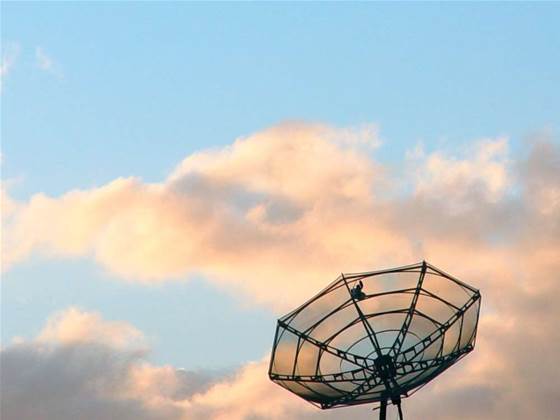The first antenna to be assembled for the Australia Square Kilometre Array Pathfinder (ASKAP) this week detected its very first radio signal: encrypted data from an Optus satellite.

Brian Boyle, who led the project at the CSIRO, said the achievement could strengthen Australia's bid to host the 1.5b Euro international Square Kilometre Array telescope in 2013.
The detected signal had been transmitted by an Optus B3 satellite, which Boyle said was the strongest radio signal in the sky at the time of testing.
According to an Optus spokesperson, that specific satellite carried mobile, broadband and data services.
"We've been able to demonstrate that the antenna works above specification," Boyle told iTnews. "Accuracy is better than expected."
"Of course, we aren't normally interested in radio signals from Optus satellites," he said, noting that the project aimed only to measure the surface of the antenna, and no encryption was breeched.
"It [the signal] was just like looking at a very strong radio star," he said.
The antenna that had been assembled was the first of 36 identical 12-metre dishes that would comprise the ASKAP telescope. It was 12 metres in diameter, 18 metres high, and featured three moving axes so that it could rotate in unison with the sky.
During the next few weeks, researchers planned to install additional components, including feeds, receivers and data processing systems to the assembled antenna.
ASKAP's first six antennae were expected to be operational by 2011, and the complete system was to be completed by 2013.
Data would be transmitted to the Pawsey supercomputer in Perth via a "data superhighway" that comprised AARNet infrastructure to Geraldton and the NBN from Geraldton to Perth, Boyle said.
Compared to the other potential SKA site in South Africa, Boyle expected Australia to be well placed to host the international radio telescope.
It would benefit the country by creating additional demand for operational support staff, hardware and development work, as well as generating opportunities for developing technology -- intellectual property -- that benefited society, he said.
He cited as examples the World Wide Web, which came from research at CERN, and CSIRO's wireless LAN patent, which came from a radioastronomy project that aimed to detect black holes.
CSIRO also was working closely with NBN Co to ensure that the Murchison-based AKSAP would be suitably connected, Boyle said.
"It will essentially demand one of the world's fastest broadband networks, and the world's fastest computer by 2020," he noted.
"We're talking with the NBN to look at the various synergies between the rollout and the SKA requirements.
"I happen to think that the Australian site is the best site [for the SKA]," he told iTnews. "I'm confident, but not complacent."


.png&h=140&w=231&c=1&s=0)

_(22).jpg&h=140&w=231&c=1&s=0)






 iTnews Executive Retreat - Security Leaders Edition
iTnews Executive Retreat - Security Leaders Edition











_(1).jpg&h=140&w=231&c=1&s=0)



